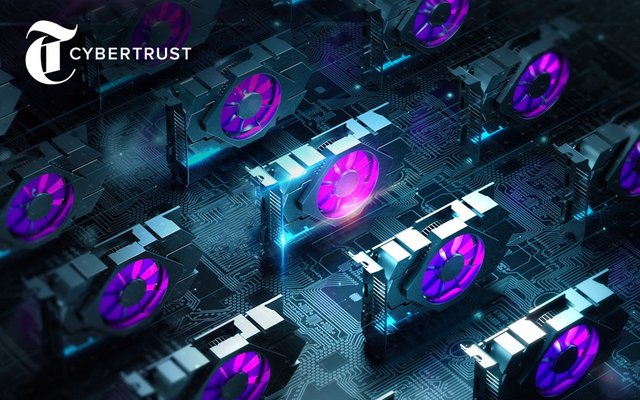
Bitcoin Super Computer Overview – Where is the Value Coming from?
Bitcoin is the original cryptocurrency with the most liquidity and significant network effects. It has a nine-year history and is the most recognizable crypto-brand among the general public, through likes of Ethereum and Ripple have been stepping on its toes in recent times. The divorce with Bitcoin Cash also dented the first cryptocurrency. But what exactly is Bitcoin?
Well in our view, it is a giant decentralized computer that produces a large number of #hash(es). But just how big is “large”? A hash is a 64-digit code sent out to the bitcoin blockchain. As of September 21, according to Blockchain.info, the entire BTC network generated 6.4 million Terrahashes (Thash) per second. 1 Thash = 1 trillion hashes.
How many hashes are needed to create one BTC?
Well that’s more tricky. Basically, according to the genesis code, the BTC network generates 12.5 BTC every 10 minutes, which should be spread across all hash mining power throughout the system more or less proportionately. This means that, as the system of hash mining capacity grows, everyone gets less BTC.
What is needed to generate a hash?
Basic inputs to generate a hash include electricity, equipment, maintenance and infrastructure amortization. Currently this business is done by mining equipment companies like Bitmain and Bitfury, in addition to Large scale mining farm operators and infrastructure providers. As a growing number of hashes improves the odds of creating blocks, that provides stimulus to create large Mining Pools.
What is the utility of the hash?
The main utility of the hash is data protection and reliability. The more hashes, the more reliable the payment network is. The more hashes, the more it costs to break the system and re-write some parts of the ledger. It is estimated that a BTC hack at current pricing would cost somewhere in the region of $1-2 billion USD.
How much was invested into the Bitcoin network?
Today the network capacity is 6.5 million TH/second. In accordance with Moore’s Law, cost in terms of TH of equipment continues to rapidly decline. Today we estimate the total cost of 1TH is roughly 150-200 USD. However, older equipment had higher costs. That implies 1.3 billion USD worth of infrastructure investment into the Bitcoin supercomputer today. This figure pails when compared to oil and gas infrastructure investments.
How much electricity does this supercomputer consume?
Electricity is the main direct cost for this Bitcoin-churning decentralized super computer. We estimate that on average with more efficient, modern equipment, it takes 2 KW/hour to generate 10 TH. This implies a total consumption of electricity that can amount to just 1.8 GW of atomic electricity capacity.
What are the growth rates?
Historically the size of the Bitcoin super computer’s hash capacity has been doubling every year, averaging monthly swinging from anywhere between a fall of 20% to a rise of 30% per month. We estimate that demand for electricity to feed the machine will double every year, while CAPEX investments will grow at a slower pace, as competition and efficiency improvements kick in.
So where is the value in all of this?
Value is spread throughout the Bitcoin Value Chain, and requires segmentation, we see value in:
- Electricity. Demand for electricity from crypto currency miners is expected to double or triple every year in the next 5 years. Electricity is quickly becoming the main competitive advantage for hash mining power around the world, and its share within the cost structure is expected to grow. We see significant value to be extracted by electricity providers and infrastructure developers around the world, which we are happy to facilitate through our investment banking services.
- Infrastructure development. As Bitcoin equipment matures, it requires cheaper electricity to stay cash flow positive. Large sets of outdated equipment provides a large market for infrastructure development projects and mining farm infrastructure hosting.
- Mining. We do not recommend this route, as, according to our analysis, it is easier to invest into Bitcoin as store of value, than invest into CAPEX which depreciates, requires maintenance, constantly drops in price and requires more and more investment in order to keep up with the arms race.
- BTC or BCH “as a store of value”. In our view, putting a small allocation of your investment assets into BTC or BCH provides you with an attractive hedge against the decline in your USD purchasing power. The fixed theoretical supply of 21 million Bitcoins, combined with very high growth rates, added to the fact that Bitcoin is an above-sovereign decentralized notary system (which, by the way, is still valued at ten times less then Facebook) all means this crypto is an attractive investment opportunity.
Get in touch or leave some comments if you’re looking for crypto investment banking advice or trading and asset management services.
Subscribe to our channels:
Telegram: http://t.me/cybertrustbank
Slack: https://goo.gl/Eoq4Rb
Facebook: https://www.facebook.com/cybertrustbank
Twitter: https://twitter.com/cybertrustbank
You can also visit our website https://www.cybertrust.io to get a copy of the white paper and learn more about CyberTrust.
thank you for sharing valuable information.
Downvoting a post can decrease pending rewards and make it less visible. Common reasons:
Submit
we are glad to welcome you, stay with us, there will be even more interesting insights
Downvoting a post can decrease pending rewards and make it less visible. Common reasons:
Submit